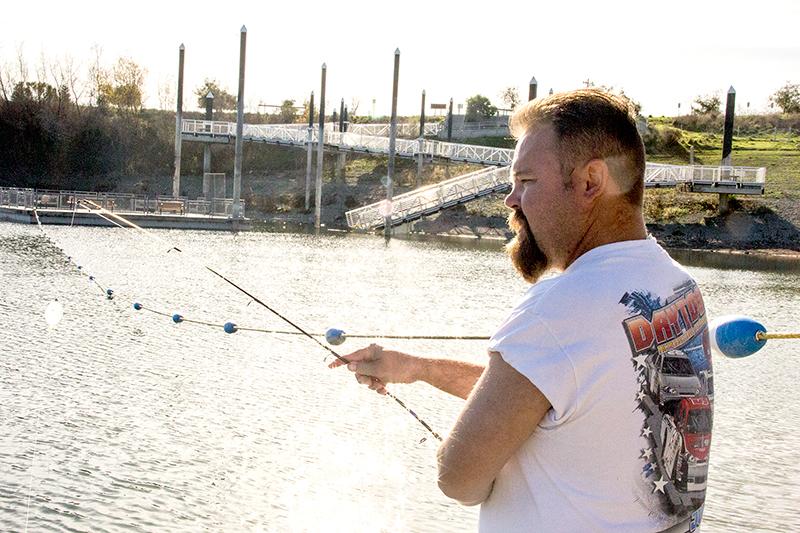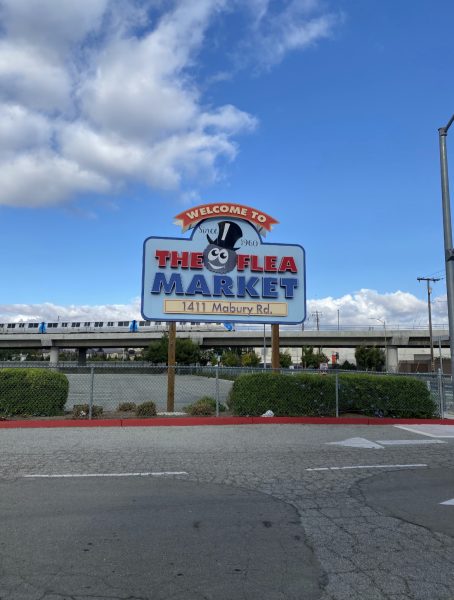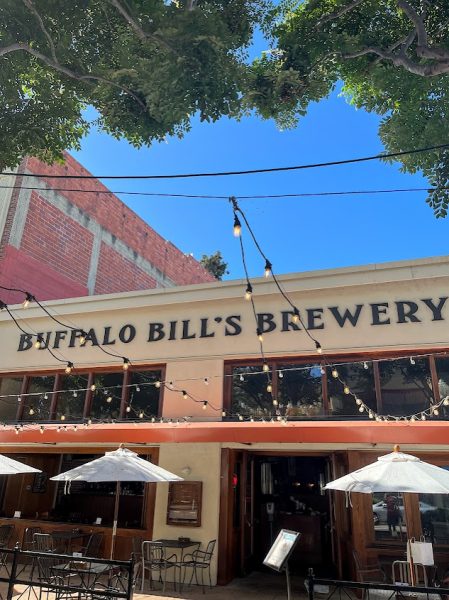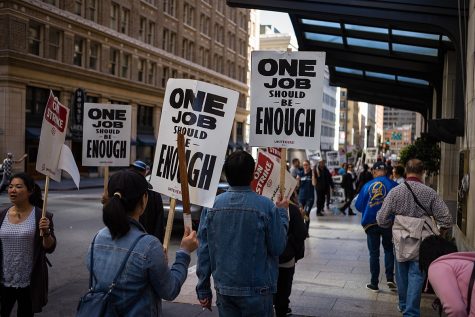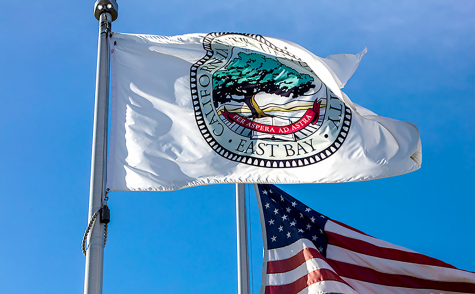New Bay Area policies set to combat drought
Danny Fernandez, a regular fisher at the Quarry Lakes Regional Recreation Area in Fremont, explained that the fishing pier is closed due to low water levels.
California’s current drought has been deemed the driest period since the state began to record rainfall levels 163 years ago, prompting Gov. Jerry Brown to call California’s drought an emergency and calls for a voluntary 20 percent reduction in water usage from state citizens.
Reservoir levels are continuing to fall around the state and Gov. Brown has asked firefighters to continue to remain on high alert.
“I don’t know how we’re going to get through the year based off the amount of water that the district has provided for us,” said local K&J Orchards farmer, Kalayada Ammatya Butel, about her stone fruit production at Pleasanton’s farmers’ market. “While we are usually given enough water to support four to five irrigations, this year we are only receiving enough to support two,” she said. “I don’t know how my trees will survive.”
Though Gov. Brown’s drought declaration sets rules for water agencies throughout the state to transfer any extra water to each other to ease shortages, local Bay Area cities are taking their own precautions in order to see that they comply with the state’s voluntary 20 percent reduction.
As of April 1, Marin County residents will be required to cut their water rations by 25 percent, stated Krishna Kumar, head of the Marin Municipal Water District.
In San Francisco, efforts to conserve water have already been underway for many decades, and have had beneficial results. Because of this, the San Francisco Public Utilities Commission, to voluntarily reduce their water usage by 10 percent, is only asking San Francisco residents.
Marisa Lagos of the San Francisco Chronicle reported Feb. 1 that San Francisco residents already use the least amount of water per day compared with the rest of the state—49 gallons on average as opposed to 100 statewide.
Residents are asked to first get to know their current water usage, then adjust little things as they go throughout their day. Since the last major drought, the city’s water usage has already dropped by 12 percent.
SFPUC is continuing to offer assistance to residents such as free conservation evaluations, financial grants for landscapers, water efficient devices such as low-pressure showerheads, rebates for new toilets, as well as free water efficient gardening classes.
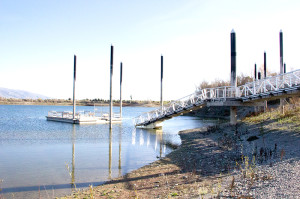
To ease shortages in the Tri-Valley, Zone 7 Water Agency agreed they would speed up the construction of new wells and pipes in order to capture and deliver local groundwater. The plan costs $11 million, stated Management Analyst of the Water Resources Division for the city of Livermore Michelle Mitchell.
In a worst-case scenario, managers from Zone 7 have said that the state will order a possible 100 percent cut in distribution of the state’s water from the Delta. Currently, the Delta is responsible for 85 to 90 percent of the Sacramento-San Joaquin River water the district sells to local departments in Dublin, San Ramon, Livermore and Pleasanton. Zone 7 does not sell water to homeowners, however, and therefore cannot ration Tri-Valley residents themselves.
Livermore has created a Water Shortage Contingency Plan, which describes the actions the city will take in response to the current drought. The plan established conservation measures aimed at reducing demand to match available water supplies.
“Livermore, as well as the other Tri-Valley cities, are starting with a request for 20 percent voluntary conservation,” stated Mitchell. “However, should that be insufficient in reducing demand, the agencies may be forced to implement mandatory conservation measures such as odd/even watering or even a ban on outdoor irrigation all together.”
The Livermore City Council will meet again Feb. 24 to consider an item to establish Stage One of conservation measures in order to reach their goal of 20 percent reduction.
Pleasanton Vice Mayor Jerry Pentin attended the California State Water Resources meeting in Dublin last Thursday, and was updated on the bleak state of our water issue.
“We are in the early stages of responding to this water crisis, there is certainly a lot of work to be done to prepare for our future,” Pentin said.
Recently, Pleasanton and their city council approved two different water recycling plans to use recycled water to irrigate landscaping in the Hacienda Business Park and Val Vista Park, along with an eastern plan that is currently using recycled water from Livermore to irrigate landscaping in the Staple Ranch properties.
“Maybe the current water crisis will finally wake everyone up that we can’t just use our water one time, clean up and discard it,” said Pentin. “I am an advocate of both recycled water and reverse osmosis, one of which we’ve started doing and the other of which is still quite controversial.”
The California State Water Project is a water storage and delivery system for power plants, aqueducts, pumping plans and reservoirs. Its purpose it to store and distribute water to Northern California, the Bay Area, the Central Coast, San Joaquin Valley and Southern California. According to the California Department of Water Resources, it serves 25 million Californians and 750,000 acres of irrigated farmland. The Tri-Valley, however, is getting zero water from this project.
“But we have a big aquifer to supply us water, normally 20 percent of water is from wells and 80 percent is from state project but this year we’re receiving zero, so 100 percent will have to come from the wells,” stated Sue Stephenson of Dublin San Ramon Services District.
“However, almost 20 percent of the water we serve to our customers is recycled water,” Stephenson added.
Members from East Bay Municipal Utility District met with members from Dublin San Ramon Services District to figure out how to work together to bring recycled water to the Tri-Valley. EBMUD is responsible for providing high-quality drinking water to 1.3 million residents in Alameda and Contra Costa counties
Flushed toilet water is first sent to a plant to get treated, the treated water is then sent to DSRSD’s recycle plant where it is treated a second time with micro-filters and ultra-violet lights.
“After, the water is used to irrigate with,” said Stephenson. “This a very sustainable resource, because people will keep going to the bathroom”
The Bay Area has finally experienced some relief in the past two weeks due to the downpour of rain residents have been seen. The heavy rain the Bay Area faced two weeks ago was the result of an atmospheric event called a Pineapple Express that originated from Hawaii and drenched parts of the state and the Bay Area. KQED reports Mount Tamalpais in San Francisco received 23.51 inches of rain.
However, the storm system hit mainly Northern California, leaving the rest of the state high and dry.
A report published by the U.S. Geological Survey and the Scripps Institution of Oceanography in December 2013 states that major atmospheric events like this can potentially end an intense drought like the one California currently faces, though this time that doesn’t seem to be the case.
“The rain is a good thing, but it will take a whole lot of rain for us to get caught up; several months,” said Stephenson. “It’s good, but doesn’t solve the drought problem yet.”
California officials announced Jan. 31 that they would not be sending any water from the state’s reservoir system to local agencies beginning in the spring. This move will affect water supplies for 25 million people and will also affect one million acres of farmland.
Federal officials told the San Francisco Chronicle Feb. 4 that $20 million in aid has been given to California farmers. The money will be used to make improvements in irrigation as well as assist with water facilities.


